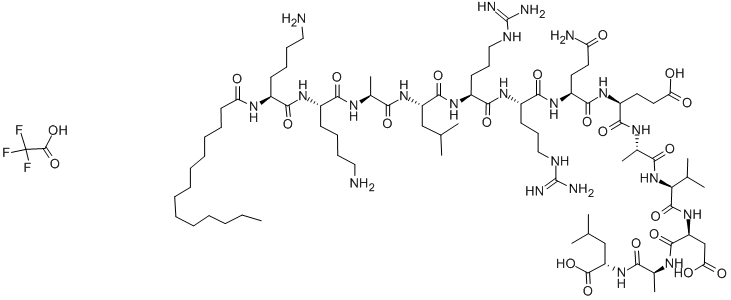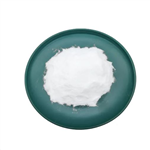Uses
Autocamtide-2-Related Inhibitory Peptide is a highly specific and potent inhibitor of CaMKII.
Uses
Autocamtide 2-related inhibitory peptide has been used:
- To inhibit calmodulin kinase II (CaMKII) action in virulent Theileria infected macrophages
- To study its influence on oxidative stress associated with neural cell death after hypoxia-ischemia, using neonatal hippocampal slice cultures
- To quench the phosphorylation of recombinant synGA (GTPase-activating protein) induced by CaMKII
Biological Activity
synthetic peptide aip (autocamtide-2-related inhibitory peptide) is a nonphosphorylatable analog of autocamtide-2, which was identified to be a highly specific and potent inhibitor of calmodulin-dependent protein kinase ii (cam-kinase ii, camkii). camkii is a serine/threonine-specific protein kinase, which is modulated by the ca2+/calmodulin.
Biochem/physiol Actions
Calmodulin kinase II facilitates the calcium-dependent L-type calcium channels. Autocamtide 2-related inhibitory peptide action does not influence cAMP (cyclic adenosine monophosphate)-dependent protein kinase II, calmodulin-dependent protein kinase IV and protein kinase C. Increased expression of calmodulin kinase II is observed in structural heart disease, indicated by myocardial infarction. Thus, inhibition of calmodulin kinase II activity might serve as a protective effect against structural heart disease, as it is found to prevent cardiac hypertrophy, dilation and dysfunction.
in vitro
aip (1 mm) completely inhibited camkii activity, but did not affect camp-dependent protein kinase, calmodulin-dependent protein kinase iv and protein kinase c,. the inhibition was noncompetitive, and the action was caused by binding to the autophosphorylation site, which is distinc from that for the exogenous substrate. the ic50 for the autophosphorylation of cam ii is 100 nm [1].
in vivo
mice treated with aip by transgenic expression of aip, were protected from fructose-rich diet-induced arrhythmogenesis, spontaneous contractions and spontaneous ca2+ release events [2]. intra-nucleus accumbens (nac) injection of aip could dose-dependently increase the hwl (hindpaw withdrawal latency) to noxious thermal and mechanical stimulation in rats with mononeuropathy [3].
IC 50
40 nm for cam-kinase ii [1].
References
[1] ishida a1, kameshita i, okuno s, kitani t, fujisawa h. a novel highly specific and potent inhibitor of calmodulin-dependent protein kinase ii. biochem biophys res commun. 1995 jul 26;212(3):806-12.
[2] sommese l, valverde ca, blanco p, castro mc, rueda ov, kaetzel m, dedman j, anderson me, mattiazzi a, palomeque j. ryanodine receptor phosphorylation by camkii promotes spontaneous ca(2+) release events in a rodent model of early stage diabetes: the arrhythmogenic substrate. int j cardiol. 2016 jan 1;202:394-406.
[3] bian h, yu lc. intra-nucleus accumbens administration of the calcium/calmodulin-dependent protein kinase ii inhibitor aip induced antinociception in rats with mononeuropathy. neurosci lett. 2015 jul 10;599:129-32.



